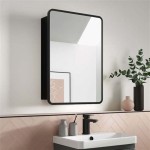How to Use Mirrors in the Living Room
Mirrors have long been a staple in interior design, serving both practical and aesthetic purposes. In living rooms, mirrors can enhance the space's appearance, create a sense of depth, and even improve natural light. When strategically placed, mirrors can transform a living room, making it feel larger, brighter, and more inviting. This article explores different ways to incorporate mirrors into your living room, offering practical tips and design inspiration.
1. Enhancing Natural Light
One of the most effective ways to use mirrors in a living room is to maximize natural light. Mirrors reflect light, effectively bouncing it around a room and brightening darker corners. This is particularly beneficial in rooms with limited windows or those facing north. To achieve this, position mirrors opposite windows or in strategic locations that allow them to reflect sunlight onto other areas of the room.
For example, consider placing a large mirror above a fireplace mantel, as this will reflect light from the window back into the room. Alternatively, a tall mirror placed on a wall adjacent to a window can create a sense of openness and brighten a corner of the room. Choosing a mirror with a wide frame or an ornate design can add visual interest and complement the existing decor.
2. Creating an Illusion of Space
Mirrors have the remarkable ability to create the illusion of more space, making a small living room feel larger and more airy. By reflecting the surroundings, mirrors trick the eye into perceiving a larger area than what actually exists. This is particularly effective when used in conjunction with other design elements like light colors and strategically placed furniture.
To maximize the effect of space-enhancing mirrors, position them on the wall opposite a window or a focal point. This creates a sense of depth and visual interest, making the room appear more expansive. Alternatively, a mirror placed above a console table or a sideboard can reflect the surrounding furniture and create a sense of continuity, visually extending the space. It's important to choose a mirror that is appropriately sized to the space and complements the existing decor.
3. Adding Visual Interest and Style
Beyond functionality, mirrors can also play a crucial role in adding visual interest and style to a living room. Mirrors come in a wide range of shapes, sizes, and styles, offering endless options for personalizing a space. From classic rectangular mirrors with simple frames to ornate statement pieces with intricate designs, there's a mirror to suit every taste and design aesthetic.
Antique mirrors with aged frames can add a touch of vintage charm, while modern mirrors with sleek frames can create a contemporary vibe. Consider using a grouping of smaller mirrors to create a gallery wall, or a large statement mirror as a focal point. Incorporating mirrors with different textures, finishes, and designs can add depth and dimension to the living room.
4. Reflecting Focal Points
Mirrors can be used to draw attention to specific focal points in a living room, enhancing the prominence of existing features. This can be achieved by strategically positioning a mirror to reflect a fireplace, a piece of artwork, or a statement piece of furniture.
For instance, placing a mirror above a fireplace can amplify the visual impact of the mantelpiece and create a sense of symmetry. Alternatively, positioning a mirror opposite a beautiful sculpture or a unique artwork can reflect its beauty and draw the eye to it. Mirrors with a simple frame or a subtle design are ideal for this purpose, as they will not detract from the focal point.
5. Selecting the Right Mirror Size and Shape
Choosing the right size and shape of mirror is crucial for achieving the desired visual effect. A small mirror can create a subtle accent, while a larger mirror can make a bolder statement. The shape of the mirror should complement the overall design aesthetic of the room and should not clash with the existing furniture or décor.
For example, a round mirror can add softness and whimsy to a living room, while a rectangular mirror can create a sense of order and sophistication. If the living room is small, it is best to choose a mirror that is not too large, as this can make the space feel cramped. Conversely, a large mirror can make a spacious living room feel more intimate and cozy. It's essential to consider the proportions of the room and the existing furniture when selecting a mirror size and shape.
:strip_icc()/rsw_2320h_1740-d25666e158074d5abe9855175e9e1919.jpg?strip=all)
20 Breathtaking Living Room Mirror Ideas To Try

6 Ways To Use Mirrors Make Your Home Feel Bigger And Brighter
:strip_icc()/Derby-LivingRoom3-944845eee84140c684a11429f0e8bfd4.jpg?strip=all)
20 Breathtaking Living Room Mirror Ideas To Try

How To Decorate With Mirrors Decorating Ideas For

5 Easy Ways Living Room Mirrors Can Amp Up Your Space

14 Mesmerizing Living Room Mirror Ideas The Best Mirrors

20 Incredibly Clever Ways To Decorate With Mirrors In A Small Living Room Michael Helwig Interiors

Fresh Ways To Incorporate Mirrors In The Living Room Homelane Blog

How To Decorate Your Living Room With Mirrors Beautiful Homes
:strip_icc()/ScreenShot2022-11-21at2.10.11PM-43b35160283c4ee7a6beaf0d32e5b96b.png?strip=all)
20 Breathtaking Living Room Mirror Ideas To Try








